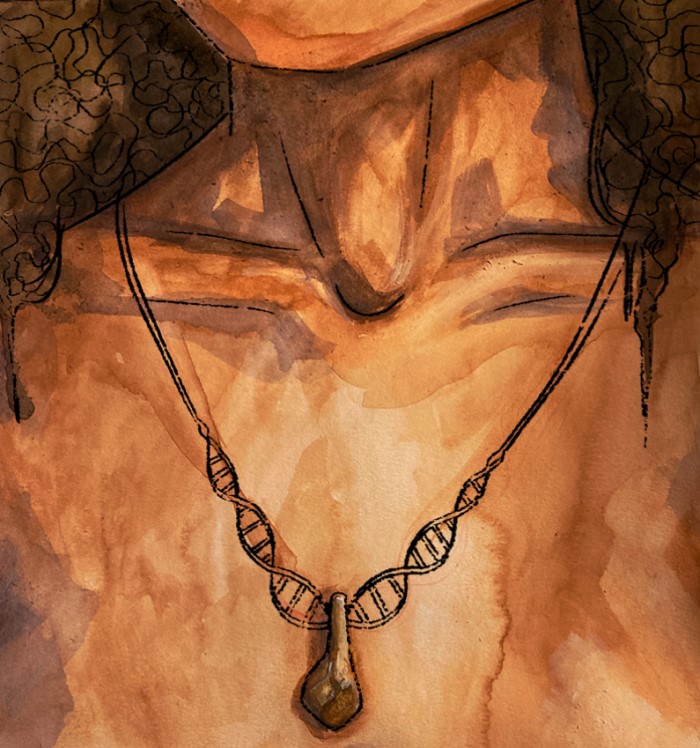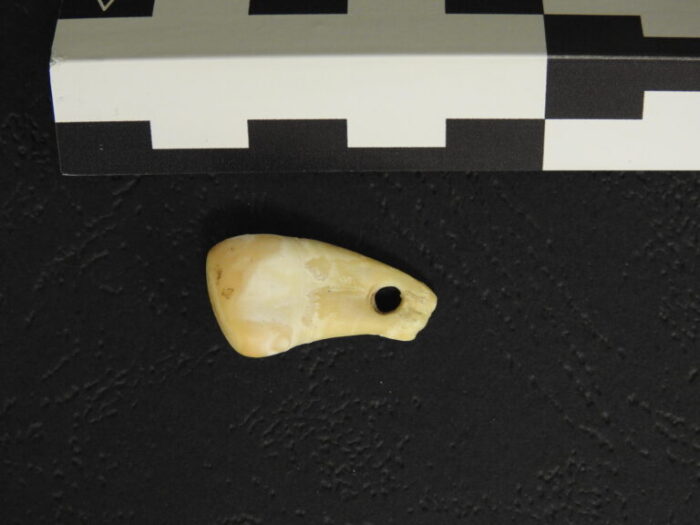May 6 to 21 is Science Odyssey, a celebration of all things science! OWLconnected is recognizing this two-week event with lots of science content, as well as with an amazing contest, presented by our friends at the Natural Sciences and Engineering Research Council of Canada (NSERC). Details are at the end of this post—be sure to enter!
Humans love to make jewelry. Rings, earrings, bracelets, necklaces. Not only do they look good on us, they can also carry meaning and memories of loved ones and important events.
And, as it turns out, they can occasionally carry information about us deep into the future!
A recent example of this is a deer tooth pendant (jewelry attached to a necklace) that was discovered in Russia in 2019. It was found in Denisova Cave in Siberia—a location famous for its early human artifacts. And new research from the Max Planck Institute in Germany has found traces of a person's DNA attached to it.
This person—who would likely have been a woman—would've been alive 20,000 years ago. And what's maybe even more incredible is that scientists are able to extract the DNA without damaging the artifacts at all!
How does DNA get there?

An artist's imagining of what the necklace might have looked like when worn 20,000 years ago! (Mrythe Lucas)
DNA stands for Deoxyribonucleic acid. It is a type of large molecule that is unique to every living thing. It is our signature—a blueprint to how we are built.
We actually leave traces of our own DNA everywhere we go. In our skin cells, hairs, body oils ... almost anything that we come in contact with can contain some of our bio-signature.
In the case of this pendant, the woman's sweat and skin cells would've been absorbed by the tooth, sealing her DNA inside it.
How did they get it out?
Scientists have been able to extract DNA from ancient objects for a while now. But it usually has meant drilling into the object and taking out a physical sample of it. In other words, damaging it.
This is not desirable! After all, these scientists are also historians—they want to preserve the artifact as much as possible.
But the researchers at Max Planck are helping to pioneer a new method of DNA extraction that doesn't damage the artifact at all. In fact, they wash it!
By washing the piece at 90 degrees Celsius (194 Fahrenheit), strong traces of the DNA are removed by the water. Then the researchers collect the wash water, and read the DNA from it.
Researchers hope that this new non-invasive technique (meaning they don't have to drill into the object) will change how researchers investigate artifacts and fossils. So fascinating!
Contest alert
Don't forget to enter the Science Odyssey Contest! CLICK HERE TO ENTER.

 This deer tooth contains DNA that is 20,000 years old! (Max Planck Institute for Evolutionary Anthropology)
This deer tooth contains DNA that is 20,000 years old! (Max Planck Institute for Evolutionary Anthropology)









